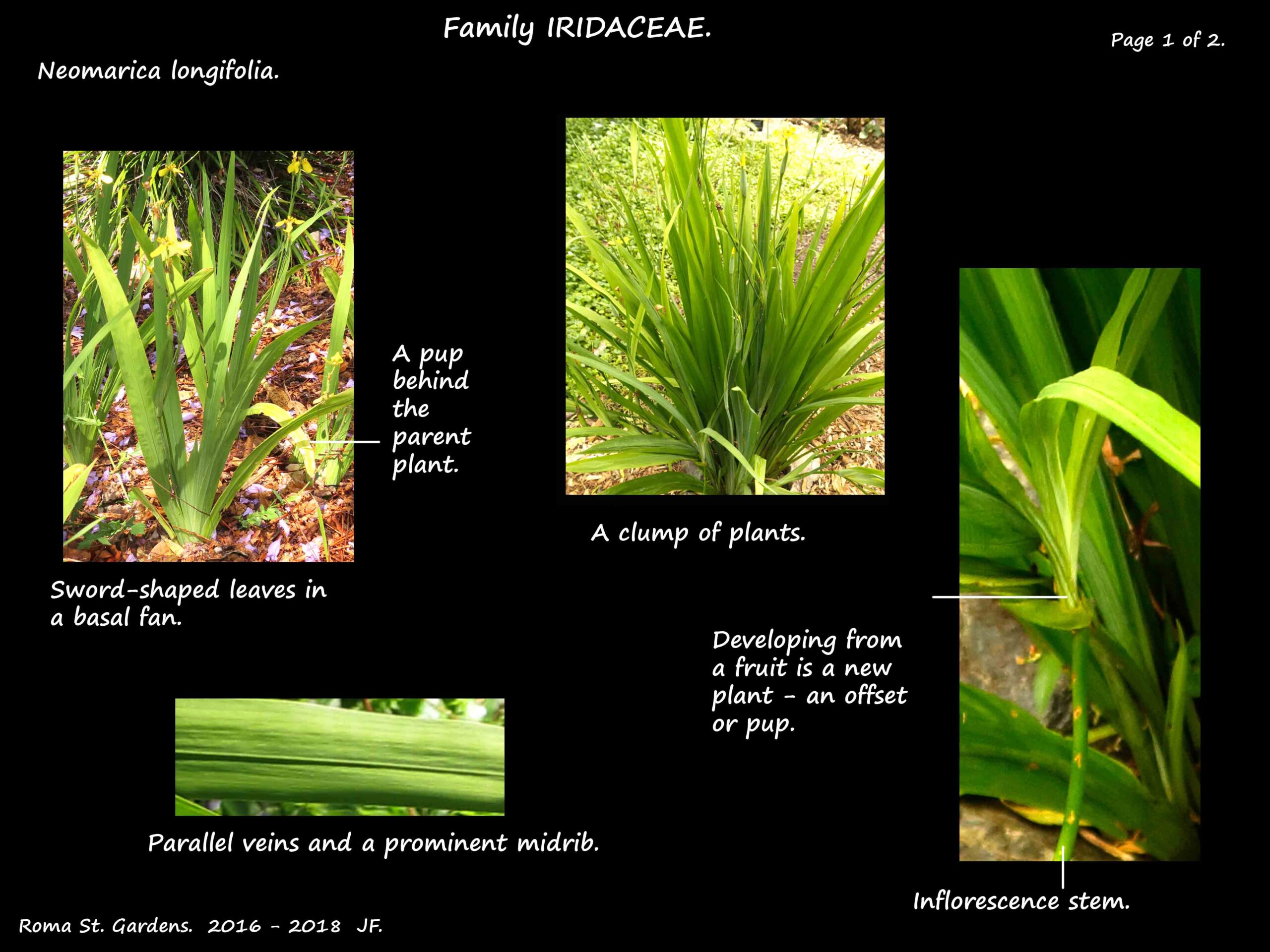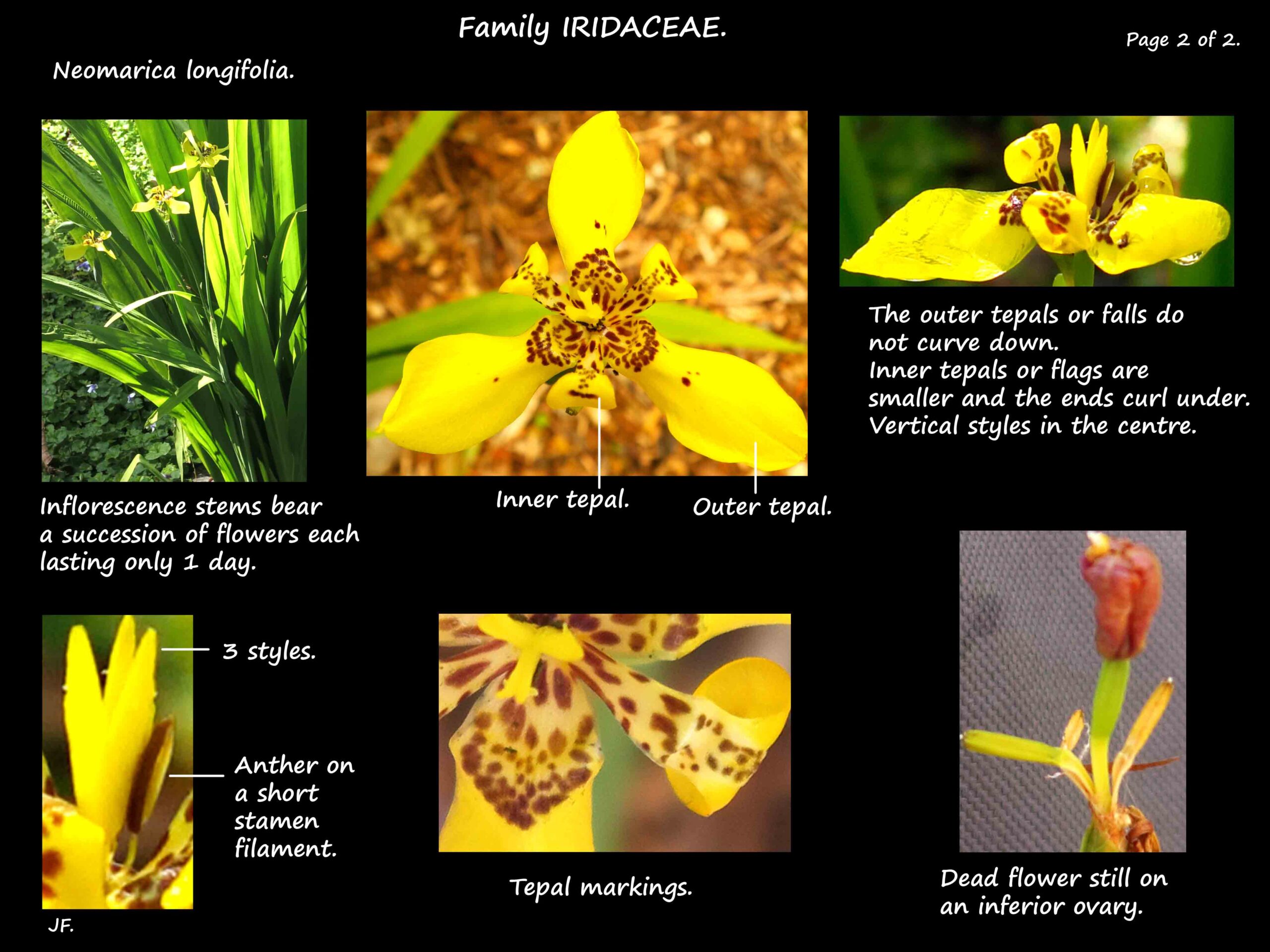Neomarica longifolia – Walking iris.
Family Iridaceae.
Some put Neomarica into the genus Trimezia making Neomarica a synonym.
Common names include Yellow Walking Iris and Apostle Plant.
There are 30 species.
They are evergreen clumping plants to up 1 m high growing from rhizomes.
The green to blush-green sword-shaped leaves are up to 30 cm long.
They are arranged in a fan.
Fully grown plants have 12 leaves – hence the name ‘Apostle plant’.
Clumps can grow up to 1 m across and spread in all directions.
After the flower dies a new plant, with aerial roots grows from the seed pod.
The weight of the new plant (the offset or pup) causes the stem to bend to the ground.
The pups root and become separate plants that repeat the process hence the name ‘Walking Iris’.
Inflorescence stems are stiff and erect with each flower lasting a day.
The 5 cm wide flowers are yellow with brown or purplish-brown markings.
The 3 outer tepals spread sideways rather than curving downwards.
They have brown spots at the base then 2 or 3 transverse rows of brown dots.
The smaller inner 3 tepals rise up at about a 45 degree angle.
They have similar spots on the narrow base.
The slightly expanded ends that curl under have central, paler brown spots.
The 3 petaloid styles are vertical and the 3 stamens lie just external to them.
The end of each style divides into 2 lobes with the narrow stigmas at the lobe bases.
Fruit are 3-chambered capsules with red seeds.
Other species of Neomarica have blue and white flowers or blue flowers with yellow, orange or brown claws.
J.F.



